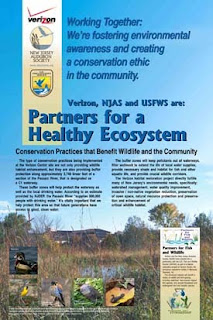Image: SEAPLEX, Scripps Environmental Accumulation of Plastic Expedition
It may be a long way from the ocean waters off New Jersey, but the Great Pacific Garbage Patch, also described as the Eastern Garbage Patch or the Pacific Trash Vortex is a problem that also affects our ocean waters.
The patch is a gyre (any manner of particularly large-scale wind, swirling vortex and ocean currents) of marine litter in the central North Pacific Ocean located roughly between 135° to 155°W and 35° to 42°N.
It is full of suspended plastic and other debris that have been trapped by the currents of the North Pacific Gyre. The approximately 3.5 million tons of trash includes shoes, toys, bags, pacifiers, wrappers, toothbrushes, and bottles – all floating round and round midway between Hawaii and San Francisco.
The garbage patch stays relatively stationary in the North Pacific Ocean because of the North Pacific Gyre’s (AKA the horse latitudes) rotational pattern. This pattern draws in waste material from across the North Pacific Ocean, including the coastal waters off North America and Japan. Then, wind-driven surface currents move floating debris toward the center, trapping it in the region.
The existence of the Pacific Gyre garbage patch received more attention after articles written by Charles Moore, a California-based sea captain and ocean researcher, made it into the mainstream media. Moore, discovered it while returning home through the North Pacific Gyre after competing in a sailing race. After Moore contacted an oceanographer, Curtis Ebbesmeyer, the area began to be studies and was dubbed the “Eastern Garbage Patch” (EGP).
The actual size of the garbage patch is unknown. Estimates range from it being 0.41% to 8.1% of the size of the Pacific Ocean itself. It is often compared in size to the size of Texas.
In NJ, we see the same trash problem in the trash that washes up on our beaches and jetties. The durability and stability of plastic is what makes it practical for product, and what makes it a problem in the ocean. It is estimated that about 100 million tons of plastic are produced each year and that 10 percent ends up in the sea. Though we can blame about 20 percent of that seagoing plastic on ships and platforms, the rest comes from land.
Polythene plastic bags, bottles and containers, plastic drums, expanded polystyrene packing, polyurethane foam pieces, pieces of polypropylene fishing net and discarded lengths of rope are a good part of that garbage - plus an endless supply of plastic products like disposable lighters can be found.
Besides the larger items that we see in the water or on beaches, there are the remnants of those that do degrade. Via sunlight, wave action and mechanical abrasion, plastics break down slowly into ever smaller particles.
These particles join the small pellets of plastic lost at sea which are actually the way new plastics are marketed for manufacturers which make up a good part of the trash patches. Sometimes called "marine tumbleweeds,” huge quantities are found in beach cleanups and are found accumulated in sea areas where winds and currents are weak.
Will we be writing about the Great Atlantic Garbage Patch one day?
- http://www.greatgarbagepatch.org
- http://sio.ucsd.edu/Expeditions/Seaplex/
- http://en.wikipedia.org/wiki/Great_Pacific_Garbage_Patch
- http://www.greenpeace.org/international/campaigns/oceans/







